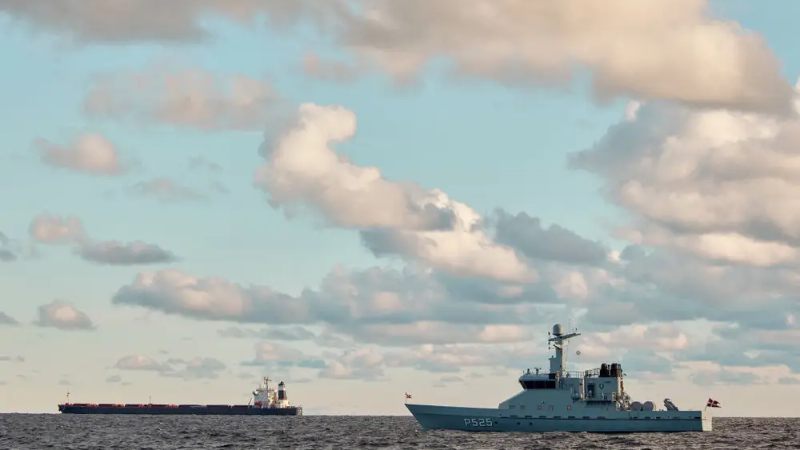
Suspected sabotage of European undersea cables shows just how vulnerable these critical lines are to attack
By Constantine Atlamazoglou, Fletcher Alum and Writer on Transatlantic and European Security
Last month, an underwater data cable between Finland and Germany and another between Lithuania and Sweden were discovered cut within a day of each other. The damage to the cables, which European officials said appeared deliberate, highlights just how vulnerable these critical undersea lines are.
Yi Peng 3, a Chinese-flagged cargo ship that had departed from Russia’s Ust-Luga port in the Gulf of Finland three days before and was tracked loitering near the two locations, is suspected in connection with the incident. It is said to have dragged an anchor over 100 miles, damaging the cables.
“No one believes that these cables were accidentally cut,” German Defense Minister Boris Pistorius said in November. “We have to assume it is sabotage,” he added.
In a joint statement with his Finnish counterpart, Pistorius said the damage comes at a time when “our European security is not only under threat from Russia’s war of aggression against Ukraine but also from hybrid warfare by malicious actors.”
As Russia received added scrutiny, Kremlin spokesman Dmitry Peskov denied Russian involvement in the incident, saying that “it is quite absurd to continue to blame Russia for everything without any reason.”
Critical but vulnerable
In recent years, a string of incidents involving damage to underwater infrastructure has occurred, many of them in the same region.
Last year, Newnew Polar Bear, another Chinese cargo ship, damaged a gas pipeline running between Estonia and Finland. China’s investigation concluded the damage was accidental; however, Estonia and Finland’s investigation is still ongoing.
In 2022, a Norwegian underwater data cable was damaged, and there were indications of human involvement in that incident. In 2021, a 2.5-mile-long section of another data cable disappeared from waters north of Norway.
The incident that received the most attention, though, was the sabotage of the Nord Steam gas pipelines between Russia and Germany in September 2022. There have been indications that Ukrainian elements might have been behind the sabotage, but this has not been confirmed.
Underwater infrastructure is increasingly critical to modern life. The vast majority of internet traffic passes through underwater fiber-optics cables, and underwater energy pipelines are common in many regions. But protecting this infrastructure, which can stretch for hundreds or thousands of miles, is difficult.
“There’s no way that we can have NATO presence alone all these thousands of kilometers of undersea, offshore infrastructure,” then-NATO leader Jens Stoltenberg said in 2023. Yet, NATO can be better at collecting and sharing information and intelligence “and connecting the dots,” he added.
Indeed, NATO and the European Union are trying to do that.
In May this year, NATO held its first Critical Undersea Infrastructure Network meeting and launched its Maritime Centre for the Security of Critical Undersea Infrastructure to better coordinate the capabilities of its members and increase collaboration between them.
Further, the EU is funding several initiatives to develop uncrewed surface and underwater systems to surveil critical areas and detect threats early.
But there are also legal difficulties to protecting underwater infrastructure, as it usually traverses the territorial waters of several countries and can also pass through international waters.
The usual suspects
Although it can often be difficult to establish a culprit whenever such infrastructure is damaged, officials have pointed out that Russian activity near underwater cables has intensified.
In 2017, the US admiral in charge of NATO’s submarine forces said the alliance was “seeing Russian underwater activity in the vicinity of undersea cables that I don’t believe we have ever seen.”
The war in Ukraine has added another dimension to this matter.
“There are heightened concerns that Russia may target undersea cables and other critical infrastructure in an effort to disrupt Western life, to gain leverage against those nations that are providing security to Ukraine,” David Cattler, NATO’s intelligence chief, said last year.
Russia has developed a number of underwater capabilities and has a specialized unit, the Main Directorate for Deep Sea Research, committed to the task.
GUGI, as the outfit is also known, is an elite Russian unit that employs specialized surface and underwater vessels capable of underwater sabotage and surveillance. Yantar, one of GUGI’s special-purpose spy vessels, which nominally acts as a survey vessel, has often been spotted near underwater cables.
Furthermore, a joint investigation released in 2023 by the public broadcasters of Sweden, Denmark, Norway, and Finland discovered that Russia, over the past decade, employed a fleet of 50 boats — masking as research or commercial vessels — to gather intelligence on allied underwater cables and wind farms in the Nordic region.
“When you look at the evidence of their activities now, the places they are doing surveys, overlaid with this critical undersea infrastructure … you can see that they are at least signaling that they have the intent and the capability to take action in this domain if they choose,” Cattler said.
(This post is republished from Business Insider.)
